
Porsche 718 Boxster engines, drive and performance
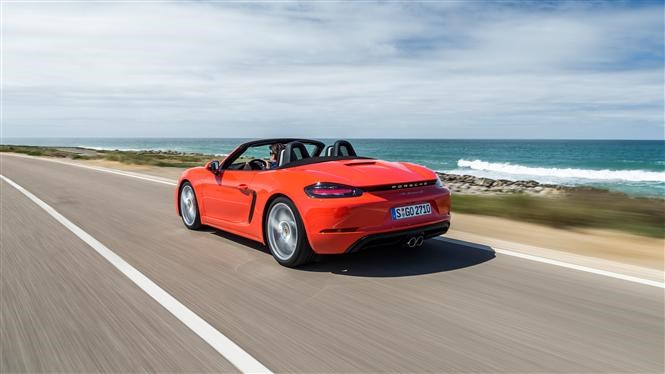
- There’s no other word – it’s sensational
- Choice of four and six-cylinder engines
- Pin-sharp handling and plenty of feedback
Petrol engines
Porsche sells the 718 Boxster with four petrol engines and they all deliver strong performance. The entry-level model features a turbocharged 2.0-litre engine with 300hp and 380Nm of torque, which is enough for a 0–62mph time of 5.1 seconds and a top speed of 170mph.
Note that you can shave that 0–62mph time down to 4.7 seconds by teaming the engine with Porsche’s optional PDK automatic gearbox and Sport Chrono package. But we reckon it’s worth keeping the standard manual ‘box for the extra driver engagement.
The next rung on the ladder is the Boxster S. It gets a larger turbocharged 2.5-litre four-cylinder engine that boosts power and torque to 350hp and 420Nm. That, in turn, hacks the car’s 0–62mph time down to 4.6 seconds (or 4.2 seconds with the automatic gearbox and Sport Chrono package), while increasing its top speed to 177mph.

Both models rev keenly to a very sports car-like 7,500rpm, which is an unusually high figure for turbocharged engines. They also offer plenty of flexibility lower down in the rev range, allowing you to accelerate onto motorways or make overtakes without dropping down several gears.
The Boxster’s four-cylinder engines are very good indeed, but they pale in comparison to the naturally aspirated 4.0-litre six-cylinder engine fitted to the Boxster GTS. It churns out 400hp, 420Nm of torque and a soundtrack that’s reminiscent of the old-school 911s from the 1980s and 1990s. There’s enough grunt for 0–62mph time of 4.5 seconds (or 4.0 seconds with the PDK) and a top speed of 182mph (or 179mph with the PDK).
The most astute readers will notice that the Boxster GTS isn’t all that much faster than the Boxster S. But the GTS isn’t just about the numbers – it’s about the sensation of performance. The tenor of the exhaust note, the Dyson-strength intake whistle and the immediate throttle response are reasons enough to opt for the engine on their own.
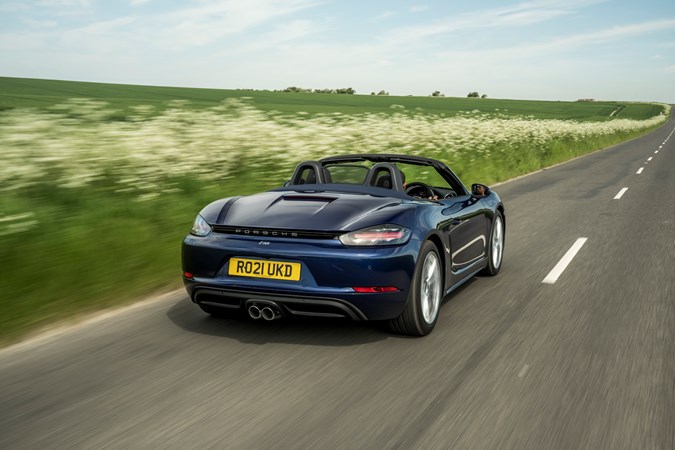
If the GTS still isn’t fast enough for you, Porsche also makes a track-honed version of the 718 Boxster called the 718 Spyder RS. It’s powered by the same 4.0-litre six-cylinder engine found in the Porsche 911 GT3 – and it produces 500hp and 450Nm of torque, which is an awful lot of poke to have in such a small and light sports car.
What’s most impressive about the unit is the bombastic sound created by the air intakes just behind the driver and passenger’s heads. It truly is one of the loudest cars to be in, especially when you start to chase the engine’s 9,000 rpm redline.
What’s it like to drive?
- Rewarding yet approachable
- Agile handling and great body control
- Sharp and talkative steering system
Despite its powerful engines, the 718 Boxster is completely unintimidating to drive. The controls serve up family-sized buckets of feedback and because you sit so low down in the middle of the car, you get a great sensation of both the topography of the road surface and the behaviour of the suspension through your backside.
It’s an exceptionally well-balanced car. The weight balance is biased slightly towards the rear of the car because of the position of the engine, but there’s virtually no understeer. Approach a corner, dab the breaks to get some weight over the front axle, saw the wheel into the bend and the 718 will simply go where you point it. It’s incredibly sticky.
In fact, there’s so much mechanical grip and traction that you can hammer the throttle to the floor on your way out of the corner and the chassis will just take the abuse and fire you onto the straight with little more than a wiggle from the rear end. Try that in a BMW M2 or a Jaguar F-Type and you’ll exit the corner in a cloud of your own tyre smoke.
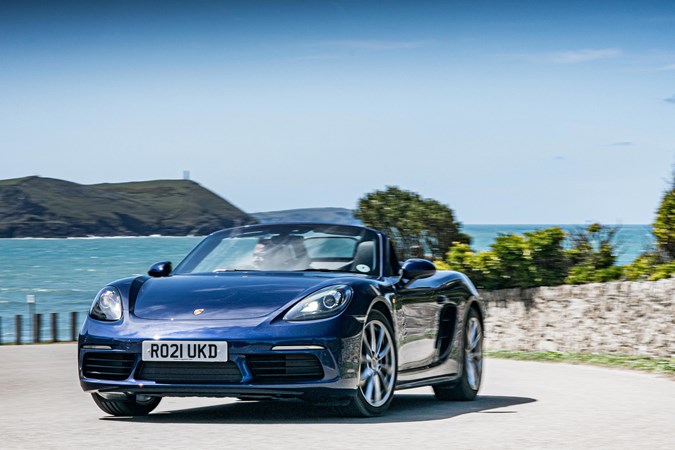
We appreciate we’re banging on a bit about the Boxster’s steering, but it’s so good it’s worth labouring the point. It shares the same quick steering ratio as the 911, which means a little turn at the steering wheel produces a big turn at the front wheels – and that really makes the car feel eager and agile. It can change direction like a swallow.
The brakes are fantastic, too, partly because the Boxster doesn’t weigh very much. Even the six-cylinder GTS only tips the scales at 1,510kg in its heaviest trim, so even the standard brakes can haul the car to a halt far faster than you’d expect. We found ourselves braking far sooner for corners than we needed to after first stepping into the car.
Boxster and Boxster S models get a passive suspension setup as standard, which is very good. It has well-judged damping and more than enough firmness to control the (rather insubstantial) weight of the body in the corners. However, you can specify the Porsche Active Suspension Management (or PASM for short) as an optional extra – and it makes a big difference to the way the car feels.
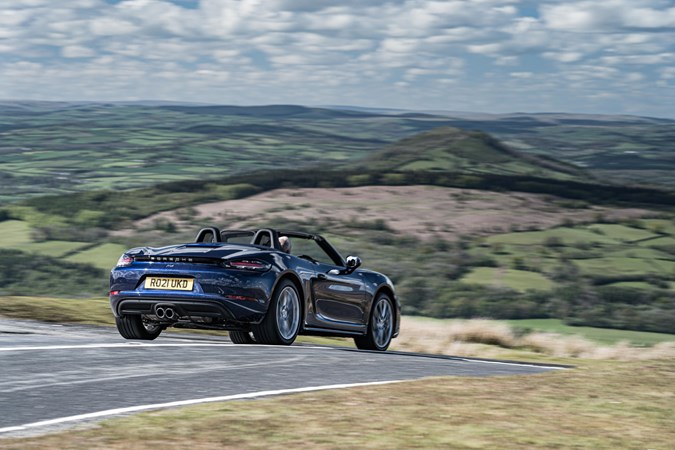
It drops the Boxster’s ride height by 20mm and adds adjustable dampers that can firmed up with the push of a button. In their tightest setting, the dampers significantly improve the Boxster’s agility, as it pitches and rolls even less when braking and cornering. You sacrifice a bit of ride quality for the improvement but, when you’re finished having fun, you can solve that issue by switching the dampers back to their standard setting.
The driving experience for the top-of-the-line 718 Spyder RS model is even more impressive. You get PASM as standard (this time lowered by 30mm) and gadgets such as Porsche Torque Vectoring (PTV). The latter piece of tech sends the engine’s power to the wheel with the most grip, making the Boxster even more competent in the bends. It feels like a race car for the road, yet there’s still a reasonable element of civility to how it drives when you’re not trying to go quickly.


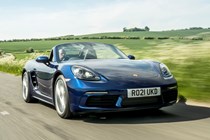
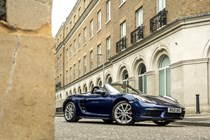
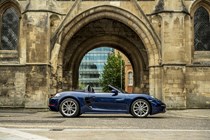

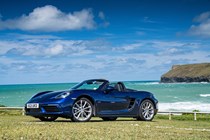
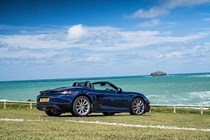

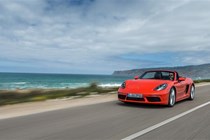
.jpg)
.jpg)
.jpg)
.jpg)
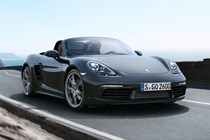
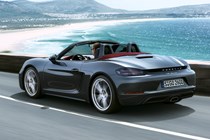
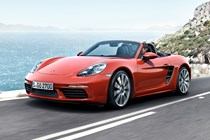

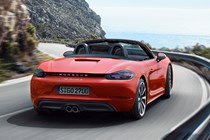
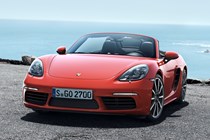

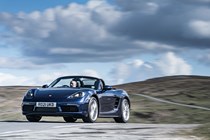
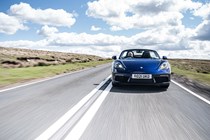
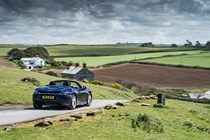
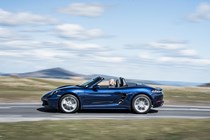


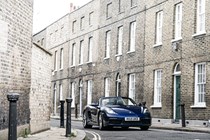
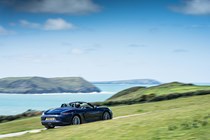

.jpg)
.jpg)
.jpg)
.jpg)
.jpg)
.jpg)
.jpg)
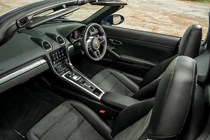
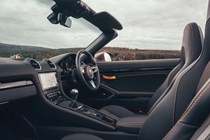
.jpg)
.jpg)
.jpg)
.jpg)
.jpg)
.jpg)
.jpg)
.jpg)
.jpg)
.jpg)
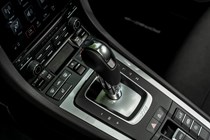
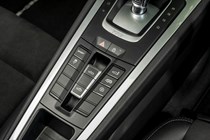
.jpg)
.jpg)
.jpg)
.jpg)
.jpg)
.jpg)
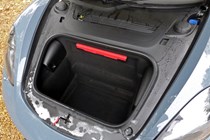

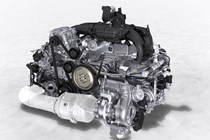








.jpg?quality=50)
.jpg?quality=50)
.jpg?quality=50)
.jpg?quality=50)
















.jpg?quality=50)
.jpg?quality=50)
.jpg?quality=50)
.jpg?quality=50)
.jpg?quality=50)
.jpg?quality=50)
.jpg?quality=50)


.jpg?quality=50)
.jpg?quality=50)
.jpg?quality=50)
.jpg?quality=50)
.jpg?quality=50)
.jpg?quality=50)
.jpg?quality=50)
.jpg?quality=50)
.jpg?quality=50)
.jpg?quality=50)


.jpg?quality=50)
.jpg?quality=50)
.jpg?quality=50)
.jpg?quality=50)
.jpg?quality=50)
.jpg?quality=50)


